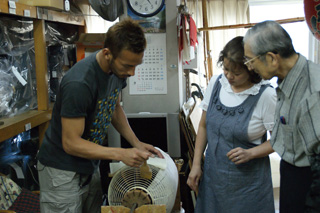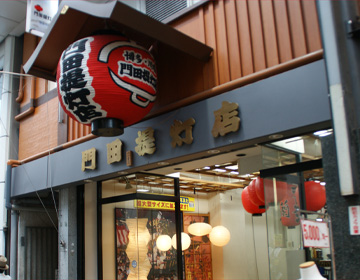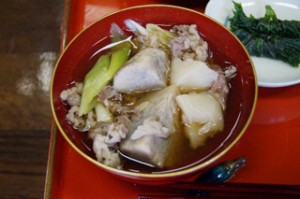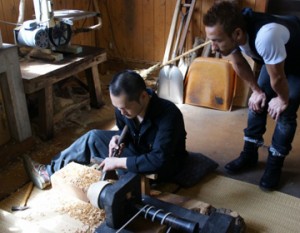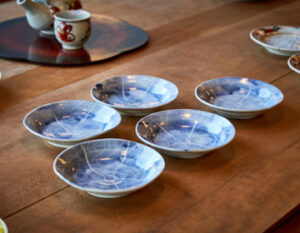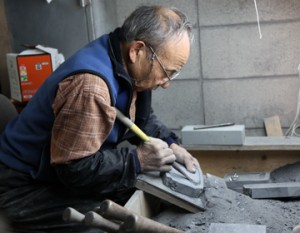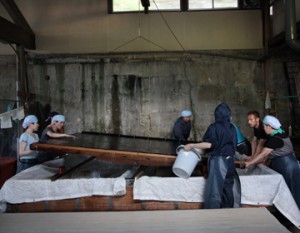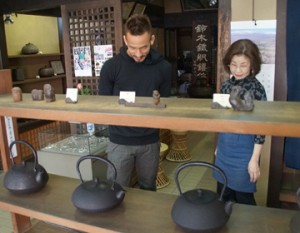Lanterns that light up festivals
We visited Kadota Chouchinten, a ”chouchin” lantern shop, which has been protecting traditional technology, and manufacturing and selling various ”chouchin” lanterns since its establishment in 1887.
It was at the beginning of the Edo period that ”chouchin” lanterns began to be used widely by commoners for household lighting. At the time, it was also used as a portable light when going out, but with the advances in civilization and technology, the demand for ”chouchin” lanterns for lighting purposes has decreased. However, they are still used as signboards for shops and are often used for festivals.

Technology handed down in the specialty shop
Lantern making starts with assembling the mold and winding a frame around it. When the frame is done, soft twist yarn is stretched vertically over the frame, glue is applied to the frame, and sheets of handmade ”washi” paper are glued on to the frame. Then the excess paper is cut with a razor along the rounded top and bottom, leaving a white lantern. This is then decorated with family crests, letters and coloring, and is finished.
Nakata tried gluing the ”washi” paper on to the frame, and writing letters on a white lantern. Gluing ”washi” paper on to a sphere and cutting it along the frame was harder than imagined, and Nakata struggled with the process. When ”washi” paper is glued on the side frame, the wooden mold is slowly pulled out of the lantern while the paper is still half dry. The timing is important because the paper will tear when it is dry. Skill is required for writing letters on a sphere as well, because it is not like ordinary calligraphy.
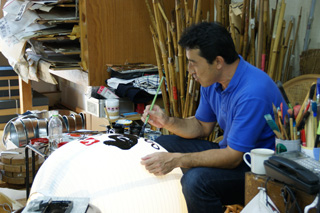
Making a ”chouchin” lantern
Kadota Chouchinten is a well established store that has been in Fukuoka, Hakata for four generations. They make ”chouchin” lanterns of various sizes, including the great ”chouchin” at Dazaifu Tenmangu, festival ”chouchin” lanterns used at Hakata Gion Yamagasa and Dontaku, ”chouchin” signs for stores and ”chouchin” lanterns for ”Obon” festivals. All ”chouchin” lanterns are entirely handmade from start to finish, including drawing letters and family crests. Toshiro, the third president, is also keen on research to make new ”chouchin” lanterns, and he has designed ones using vinyl instead of ”washi” paper, and also those using metal wire wrapped with paper for the frame instead of bamboo. He carries on the tradition and also introduces ideas that are in line with the time.
They are also particular about the ”washi” paper they use, and Kadota Chouchinten uses only ”Nao Washi” from Saga, which Nakata visited during his trip there. Nakata experienced ”washi” paper making, and then created a ”chouchin” lantern with the very same ”washi”. His travels are all coming together.
